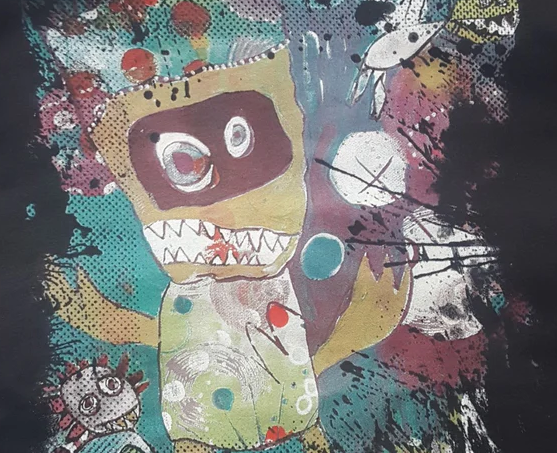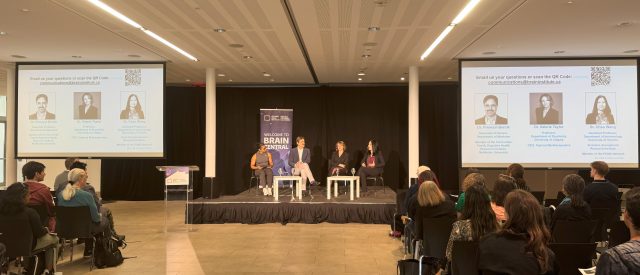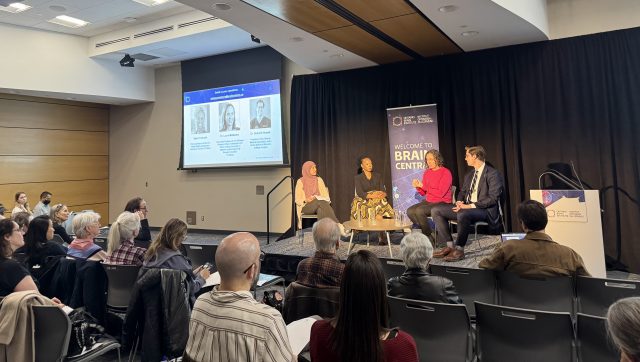“There are many ways to make a typical high school experience possible for students with frequent and even severe seizures.”
My name is Kieran, and I am a grade 11 student. I have epilepsy. I have approximately 5 seizures per day. I experience seizures every day at school and have since I started school a decade ago. I also have a visual disability and autism. In order to attend high school, I have had to be very determined and creative, which I am. I am a curious person and I love learning. My favourite subject is English as I love to read, and I love words. However, as we all know, high school is about more than academics. Students also have extra-curricular activities and social lives. Students with epilepsy deserve to have a fun high school life also.
Creating a support system
Let’s be real, being a teenager is hard enough and students with epilepsy know that having a seizure in front of the whole class can be very embarrassing. While there is no way to ignore the real challenge of a seizure in class, there are a few things that can help. First, my education assistant sets the tone. He never panics and answers questions my classmates have about epilepsy. The good thing about all of this is that my classmates are learning what seizures look like and what to do to support someone with a seizure. For example, when I was younger, my classmates had jobs in order to support me in class. One person would turn off the light and another would move things out of the way. Finally, I always ask my teachers to just keep teaching the class during my seizures, so I don’t wake up and feel like everyone is looking at me. Part of my comfort comes from being included throughout the years. Seizures have become a normal part of my classmates’ days during class, which reduces the stigma of epilepsy.
“They know me as a person first and they know I have hopes and dreams.”
Overcoming barriers in school
Many people with epilepsy have sensory struggles as well. This can make leadership and extracurricular activities difficult. A lot of leadership opportunities in high school require a tolerance for busy and noisy spaces which aren’t so good for me. Previously, I made a vow that I would go to our school’s last pep rally. I went to the gym, and it was really noisy, but I carefully continued. I didn’t notice the huge gong beside me. Suddenly, a classmate hit the gong and it completely shocked me. I covered my ears and ran out of the gym. However, as I walked around the hall with my EA to recover from the shock, we came across other students who were also stressed – I was not alone. Also, many of the opportunities for volunteer hours revolve around keeping score during games or helping at sporting events and pep rallies. I’ve had to be creative in collecting my volunteer hours. I have:
- Written a book and film reviews for my local library,
- Sold my own monster art merch to raise money for epilepsy research,
- Delivered books to people for the library, and
- Delivered Christmas hams to a local organization.
“It felt pretty great to bring people things that make them happy.”
Being involved doesn’t have to be all or nothing. When I was in grade 10, I signed up for student council, because I like sharing ideas and I thought it would be fun. I also enjoy helping with events like Halloween or Christmas events. However, because of my seizures, sometimes I’m too tired for meetings. However, because everyone knows my situation and understands me, I am always welcome. But when I miss too many meetings, the reality is, the idea of going puts me in a bad mood because I don’t know what’s going on. Ultimately, I do my best and contribute what I can. My advice to other teens like me is to make sure that everyone knows that you want to be involved. That way, they can fill you in when you miss meetings and make sure to sign you up for jobs that work for you.
Socializing in high school
I try to make friends, but my friend list is not long, which is quite bothersome to me. Due to this, I love any visit I get. However, on the bright side, I have my friends from childhood, who I still see often. One of them has a girlfriend and the others have jobs and go to parties. I only like parties with people I know, since I feel better when the people around me know what to do for my seizures. I feel like sometimes I’m wearing a plaque that says “Hello! This kid has seizures!” That can make life socially awkward. In the context of school, because I need help with eating my keto meal, I prefer a less busy atmosphere than the cafeteria. This has the potential to be isolating, but I find that there are a few students who come by every day to also eat lunch in a quieter place. I am slowly meeting more friends this way.
I would say that the social side of high school is harder for me than the academic side. It takes a lot of confidence to have daily seizures in class, but I just love school. I hope my experience is helpful to other students who are trying to navigate through the stigma of having epilepsy in high school. We are teaching our peers (and our teachers) how to care for others and how to accept people with differences.
“Every student deserves to have a great education that prepares them for the future.”
Resources:
Breaking Stigma, Building Empowerment: a storytelling project amplifies honest and diverse narratives from advocates with lived experience within the brain health community. To read other stories from Breaking Stigma, Building Empowerment, visit https://braininstitute.ca/buildingempowerment



